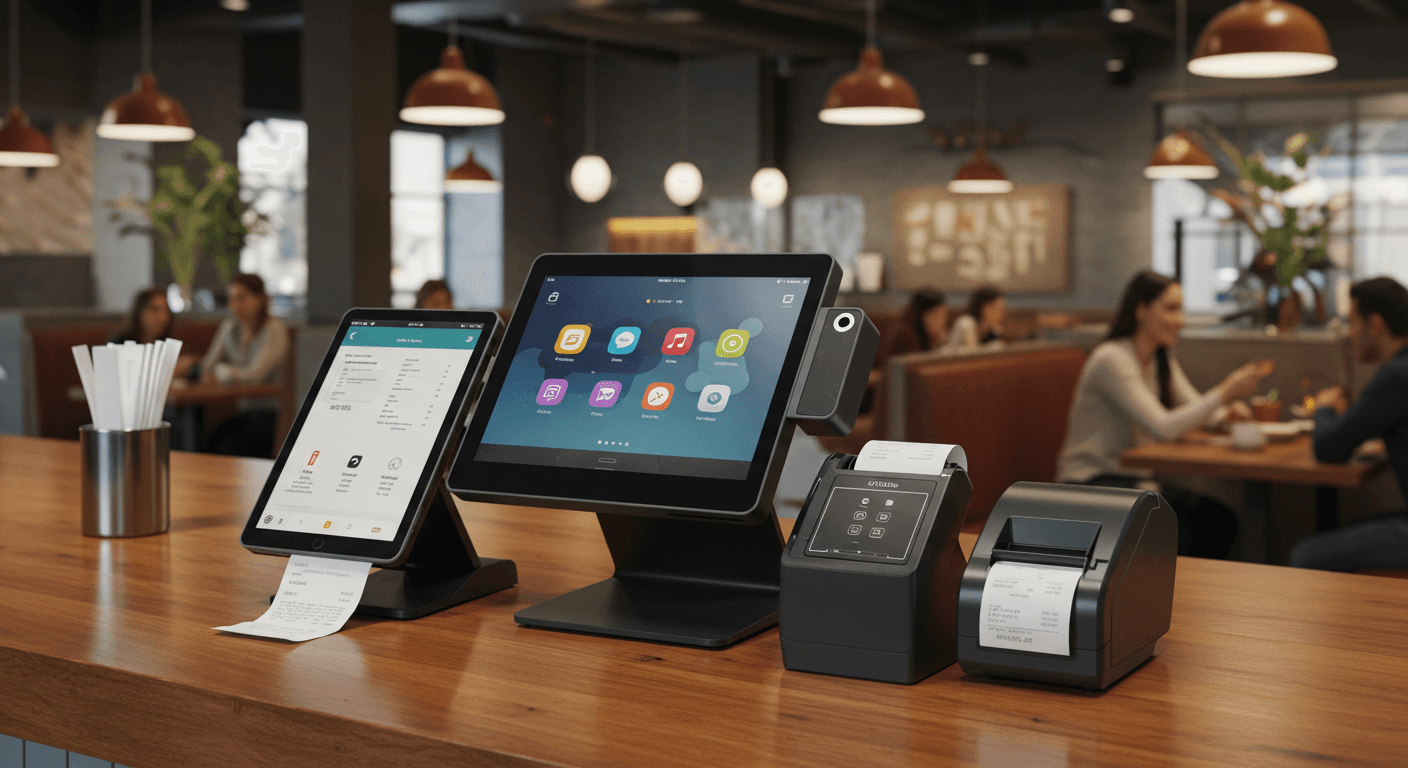Modern Payment Terminals vs Outdated Systems: Which Is Better For Your Small Business?
- pete2728
- Nov 10
- 4 min read
If you're still using that payment terminal from 2010, you're not just missing out on new features: you're actively putting your business at risk. The payment processing world has transformed dramatically over the past few years, and the gap between modern systems and outdated ones has never been wider.
Let's cut through the noise and figure out exactly what your small business needs to stay competitive, secure, and profitable.
Why Your Old Payment System Is Holding You Back
Here's the uncomfortable truth: outdated payment systems are ticking time bombs for small businesses. If your terminal is more than five years old, you're likely dealing with software that no longer receives security updates, hardware that breaks down regularly, and features that feel prehistoric compared to what customers expect today.
The biggest issue? Security vulnerabilities. Older terminals lack the encryption and tokenization that modern systems use to protect customer data. When fraud happens: and it will: you're the one held liable, not your payment processor. That's a financial risk most small businesses simply can't afford to take.
But security isn't the only problem. Your customers are frustrated too. They want to tap their phones, use Apple Pay, or quickly insert their chip cards. When your ancient terminal takes 30 seconds to process what should be a 5-second transaction, you're creating friction at the worst possible moment: right when they're trying to give you money.

What Modern Payment Terminals Actually Do for Your Business
Modern payment terminals aren't just faster versions of old machines: they're completely different beasts that can transform how you handle transactions and run your business.
Security that actually works. Today's terminals use end-to-end encryption and tokenization. This means customer card data is scrambled from the moment it's entered until it reaches the processor. Even if someone intercepts the data, it's useless to them.
Speed that customers notice. Contactless payments process in under 2 seconds. Chip cards that used to take 15-20 seconds now complete in 3-5 seconds. When you're processing dozens or hundreds of transactions per day, this time savings adds up to happier customers and shorter lines.
Payment flexibility that increases sales. Modern terminals accept everything: traditional swipe cards, chip cards, contactless cards, mobile wallets like Apple Pay and Google Pay, and even QR code payments. The more ways customers can pay, the more likely they are to complete their purchase.

The Real-World Impact: What This Means for Different Types of Businesses
Restaurants and cafes see the biggest immediate impact. Modern POS systems integrate directly with your payment processing, so when a customer pays, their transaction automatically updates your inventory, tracks popular items, and generates real-time sales reports. No more manually reconciling your register at the end of the day.
Retail stores benefit from inventory management that happens automatically. When someone buys a product, your system knows to reorder when you're running low. Modern terminals also support customer loyalty programs and email receipt collection, helping you build relationships with repeat customers.
Service-based businesses love the mobility factor. With virtual terminals or mobile card readers, you can process payments at client locations, job sites, or events. No more waiting for checks to clear or dealing with cash-only situations.

Breaking Down the Real Costs
Let's talk money, because that's what this decision really comes down to.
Outdated systems might seem cheaper upfront, but they're expensive in hidden ways. Maintenance costs, fraud liability, lost sales from customers who can't pay how they want, and the time you spend manually managing transactions all add up quickly.
Modern terminals require an initial investment, but they typically pay for themselves within months through:
Reduced fraud liability (potentially saving thousands in chargebacks)
Faster transaction times (serving more customers per hour)
Automatic reporting (saving hours of manual bookkeeping)
Better customer experience (leading to repeat business)
Many modern systems also offer predictable monthly pricing instead of surprise repair bills, making it easier to budget for your payment processing costs.
What to Look for When Upgrading
Not all modern terminals are created equal. Here's what actually matters for your business:
Integration capabilities. Your payment terminal should talk to your POS system, accounting software, and inventory management. The more integrated your systems, the less manual work you'll do.
Payment method support. Make sure your new terminal accepts contactless payments, mobile wallets, and traditional cards. This isn't optional anymore: it's what customers expect.
Reporting and analytics. Real-time sales data helps you make better business decisions. Look for systems that show you peak hours, popular products, and customer trends.
Customer support. When your payment system goes down, you need help immediately. Choose providers with 24/7 support and fast response times.

Making the Switch: Easier Than You Think
The actual upgrade process is simpler than most business owners expect. Modern payment processors handle most of the setup, and many offer free or low-cost terminal exchanges when you switch providers.
Most businesses see immediate improvements in transaction speed and customer satisfaction. The learning curve for staff is minimal: modern terminals are designed to be intuitive, not complicated.
Start with a trial period if possible. Many providers offer 30-60 day trials so you can test the system with real transactions before committing long-term.
Plan the transition during slower business hours. Most upgrades can be completed in under an hour, but schedule it when you're not expecting heavy customer traffic.
The Bottom Line: This Decision Makes Itself
Choosing between modern payment terminals and outdated systems isn't really a choice: it's a necessity for any small business that wants to stay competitive and secure.
The risks of staying with outdated systems (security breaches, fraud liability, customer frustration) far outweigh the costs of upgrading. Meanwhile, the benefits of modern terminals (better security, faster transactions, more payment options, automatic reporting) directly impact your bottom line.
Your customers are already using modern payment methods. Your competitors are already offering seamless checkout experiences. The question isn't whether you should upgrade: it's how quickly you can make it happen.
Ready to see what modern payment processing can do for your business? Contact CardPlus to discuss your specific needs and get a customized solution that actually works for your industry and business size. We'll help you understand exactly what you're paying for and how quickly you'll see results.
Your business deserves payment processing that helps you grow, not holds you back. Let's make that happen.
